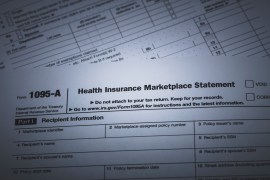Every week, Kaiser Health News reporter Jessica Marcy selects interesting reading from around the Web.
Bundle [a financial-analysis website]: The Most And Least Expensive Cities For Health Care
It’s bewildering for anyone who has ever paid for a health procedure out of pocket when health insurance doesn’t cover the full cost (or when the person is uninsured in the first place): Why does health care cost the way it does, and why do the costs fluctuate depending on where you go and who you see? A colonoscopy, for example, can range from $500 to $3,000 — a large difference depending on how health insurance providers negotiate rates. And when you’re paying out of pocket, every dollar counts (just ask the man who robbed a bank so he could get health care in prison). … We took a look at the top 100 cities in the U.S. by population to see which cities were spending the most and least on health care (Mike Dang, 7/25).
Marketplace [public radio]: Differences in Medicaid Spending, State By State
Explore the data behind the study used to create our interactive map on Medicaid spending. It’s the first study to give an apples-to-apples comparison of how states spend their money, and the results might surprise you [7/27].
American Medical News: Foreign-Trained Health Professionals Put On Path To Practice In U.S.
Dr. (Maria Angelica) Montenegro is among the unknown numbers of untapped foreign-trained physicians living in the U.S. Many are either unemployed or work jobs far below their education level. They are taxi drivers, delivery people, housekeepers and restaurant workers. There are thousands of examples, including a Russian physician who was working construction and a Yemeni doctor who was a parking garage attendant, said Dr. Jose Ramón Fernández-Peña, founder and director of the Welcome Back Initiative. The program helps foreign-trained health professionals enter the U.S. health care work force through nine centers nationwide. Since the initiative began in San Francisco in 2001, Welcome Back centers have helped 11,347 health professionals from 152 countries. Thirty-six percent of those are physicians, 42% are nurses, 13% are dentists and 9% are other health professionals (Carolyne Krupa, 7/25).
The Economist: Unfortunate Side-Effects
America’s new health law would bring change, Democrats said, but not too much. In the battle over Obamacare, no matter was more delicate than the fear that Americans would lose their insurance. “If you like your health care plan,” Barack Obama assured a town-hall meeting in 2009, “you can keep your health care plan.” Two years later, the debate continues. The basic question is whether America will abandon the current system of employer-sponsored health care in favour of insurance offered through state exchanges. A new survey from the National Federation of Independent Business (NFIB) suggests that it might (Schumpeter, 7/26).
The Nation: How States Could Ban Abortion With ‘Roe’ Still Standing
For decades, the debate over abortion rights has centered on a single court decision, Roe v. Wade, and the possibility of its overturn. Overturning Roe has become the holy grail of the antichoice movement, and many states have “trigger laws” on the books that would ban abortion immediately should the Supreme Court overturn Roe. Unfortunately for antichoicers, the justices resist overturning precedent; more importantly, Justice Anthony Kennedy, the likely swing vote on any abortion case before the court, upheld Roe on the basis of precedent in 1992. However, the recent surge in state legislation against abortion demonstrates that antichoice activists have figured out a new strategy: eliminating legal abortion without directly overturning Roe (Amanda Marcotte and Jesse Taylor, 7/14).
Time: Male Contraception May Be A Reality Sooner Than We Think
The birth control pill certainly represents a victory for women’s rights, but the realities of taking a daily medication, not to mention the expense and some unpleasant side effects makes it seem more a burden for women than a reproductive equalizer. Enter male birth control, which, researchers say, might finally help men and women to shoulder life’s responsibilities together in about 10 years. … [But] before men have the opportunity to try or pass on any new method of contraception, these options have to prove themselves in rigorous trials. (Yet) even that validation may not be enough to convince some men that contraception is an equal opportunity responsibility (Meredith Melnick, 7/27).






